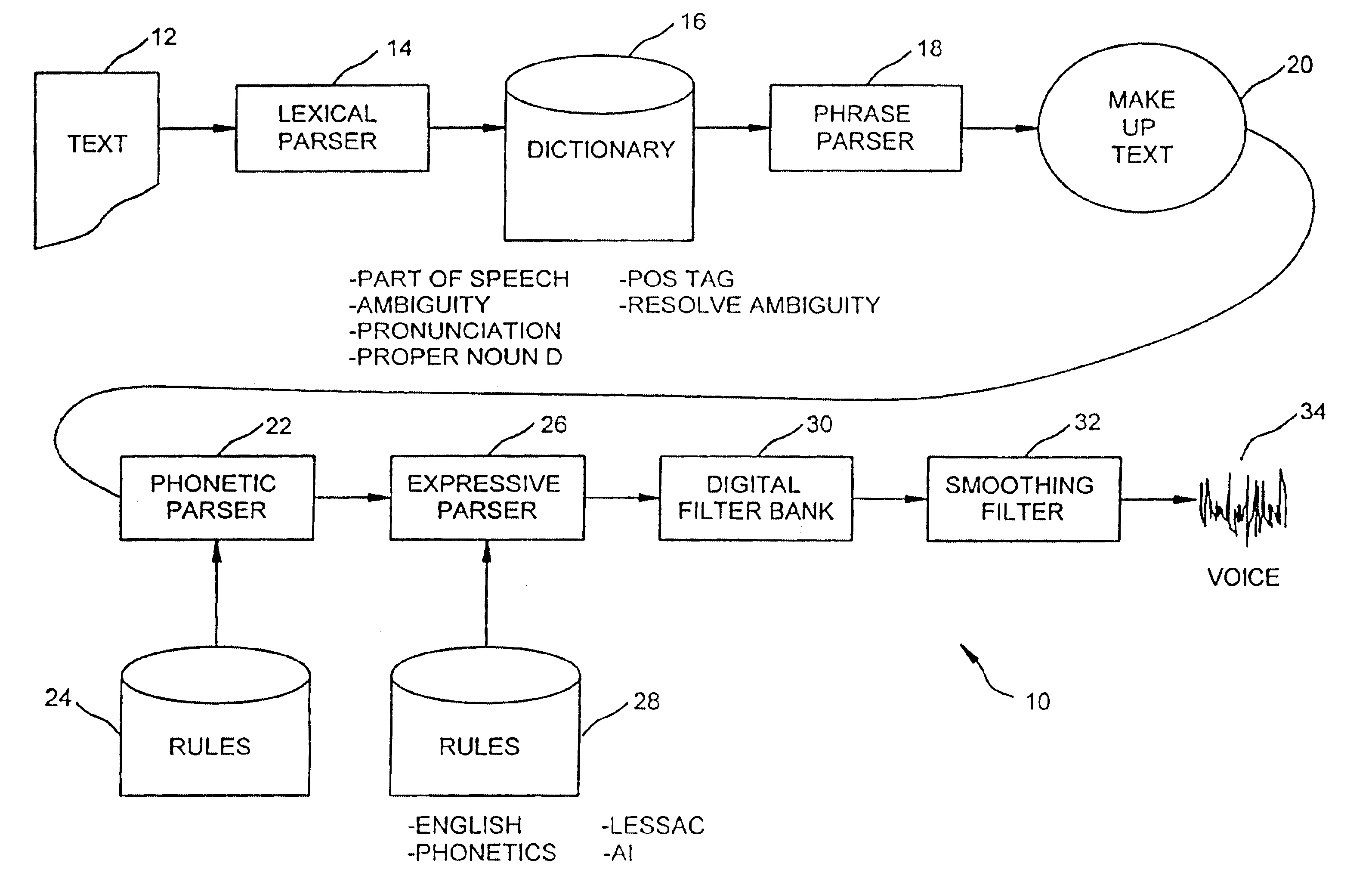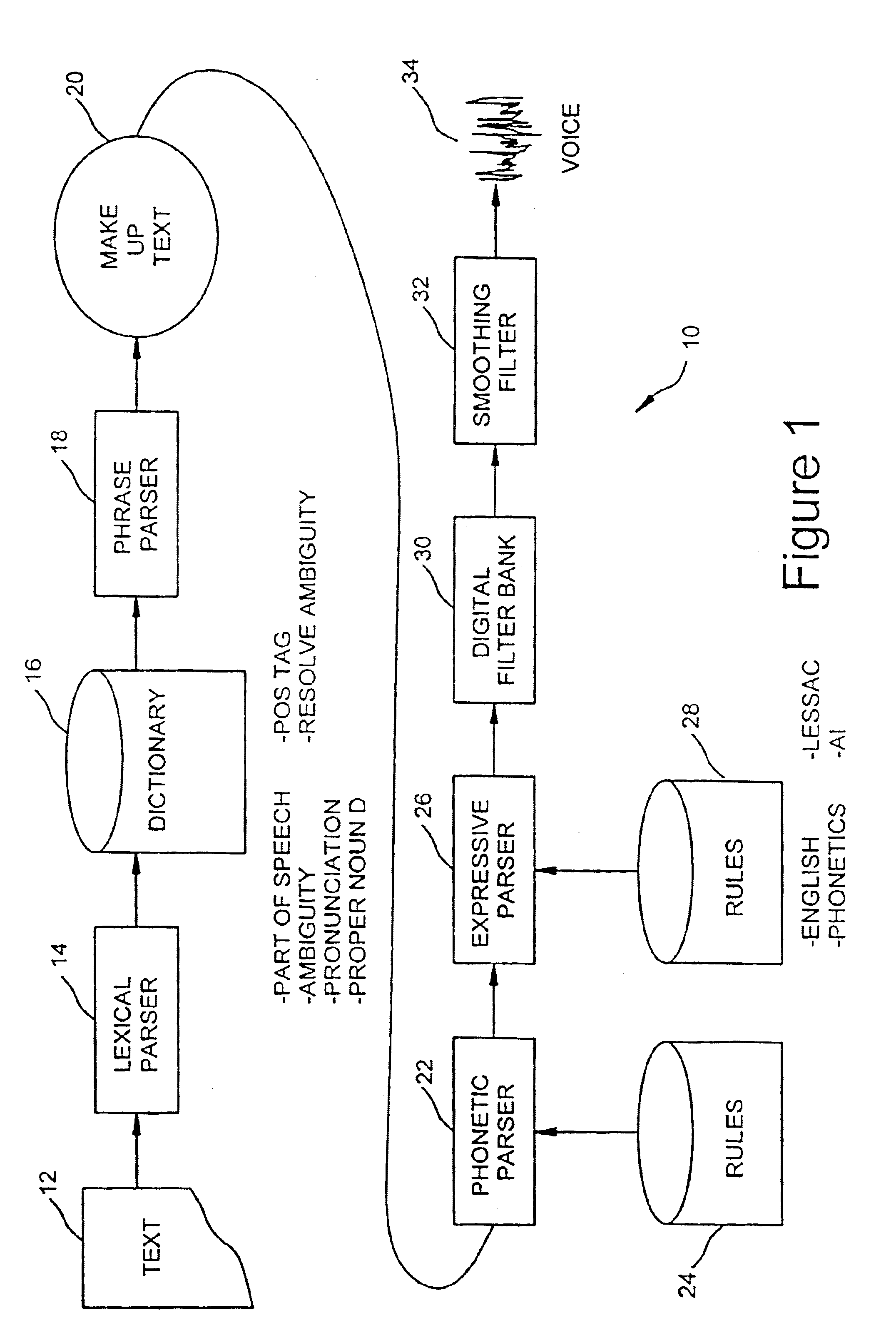Text to speech
a text and speech technology, applied in the field of text to speech, can solve the problems of not being able to achieve versatility, unable to achieve natural human speech, and being less intelligible and natural in approach, so as to avoid the conditioned pitfalls of poor vocal environment and discourage the mechanistic handling of glottal
- Summary
- Abstract
- Description
- Claims
- Application Information
AI Technical Summary
Benefits of technology
Problems solved by technology
Method used
Image
Examples
Embodiment Construction
In accordance with the present invention, an approach to voice synthesis aimed to overcome the barriers of present system is provided. In particular, present day systems based on pattern matching, phonemes, di-phones and signal processing result in “robotic” sounding speech with no significant level of human expressiveness. In accordance with one embodiment of this invention, linguistics, “N-ary phones”, and artificial intelligence rules based, in large part, on the work of Arthur Lessac are implemented to improve tonal energy, musicality, natural sounds and structural energy in the inventive computer generated speech. Applications of the present invention include customer service response systems, telephone answering systems, information retrieval, computer reading for the blind or “hands busy” person, education, office assistance, and more.
Current speech synthesis tools are based on signal processing and filtering, with processing based on phonemes, diphones and / or phonetic analys...
PUM
 Login to View More
Login to View More Abstract
Description
Claims
Application Information
 Login to View More
Login to View More - R&D
- Intellectual Property
- Life Sciences
- Materials
- Tech Scout
- Unparalleled Data Quality
- Higher Quality Content
- 60% Fewer Hallucinations
Browse by: Latest US Patents, China's latest patents, Technical Efficacy Thesaurus, Application Domain, Technology Topic, Popular Technical Reports.
© 2025 PatSnap. All rights reserved.Legal|Privacy policy|Modern Slavery Act Transparency Statement|Sitemap|About US| Contact US: help@patsnap.com



